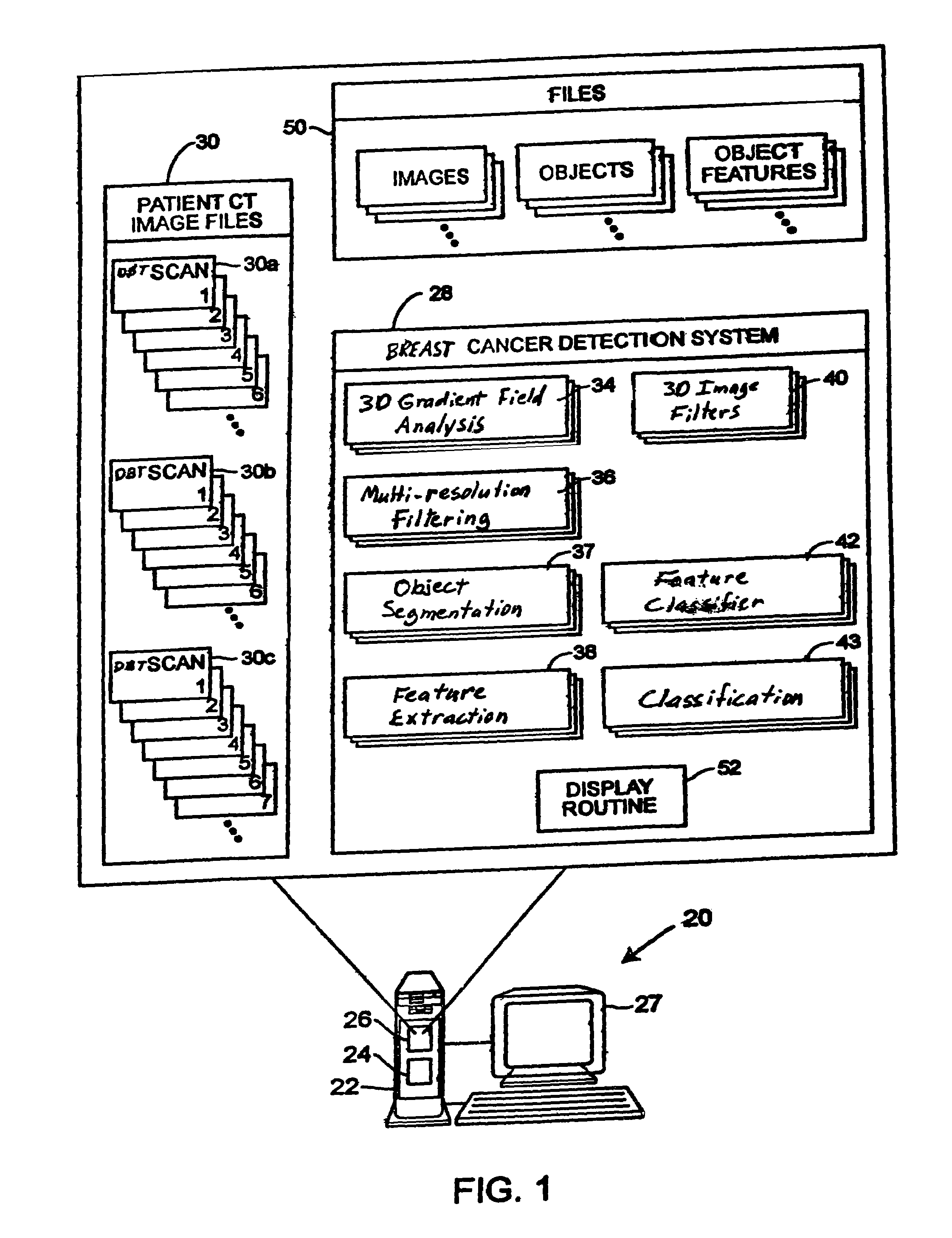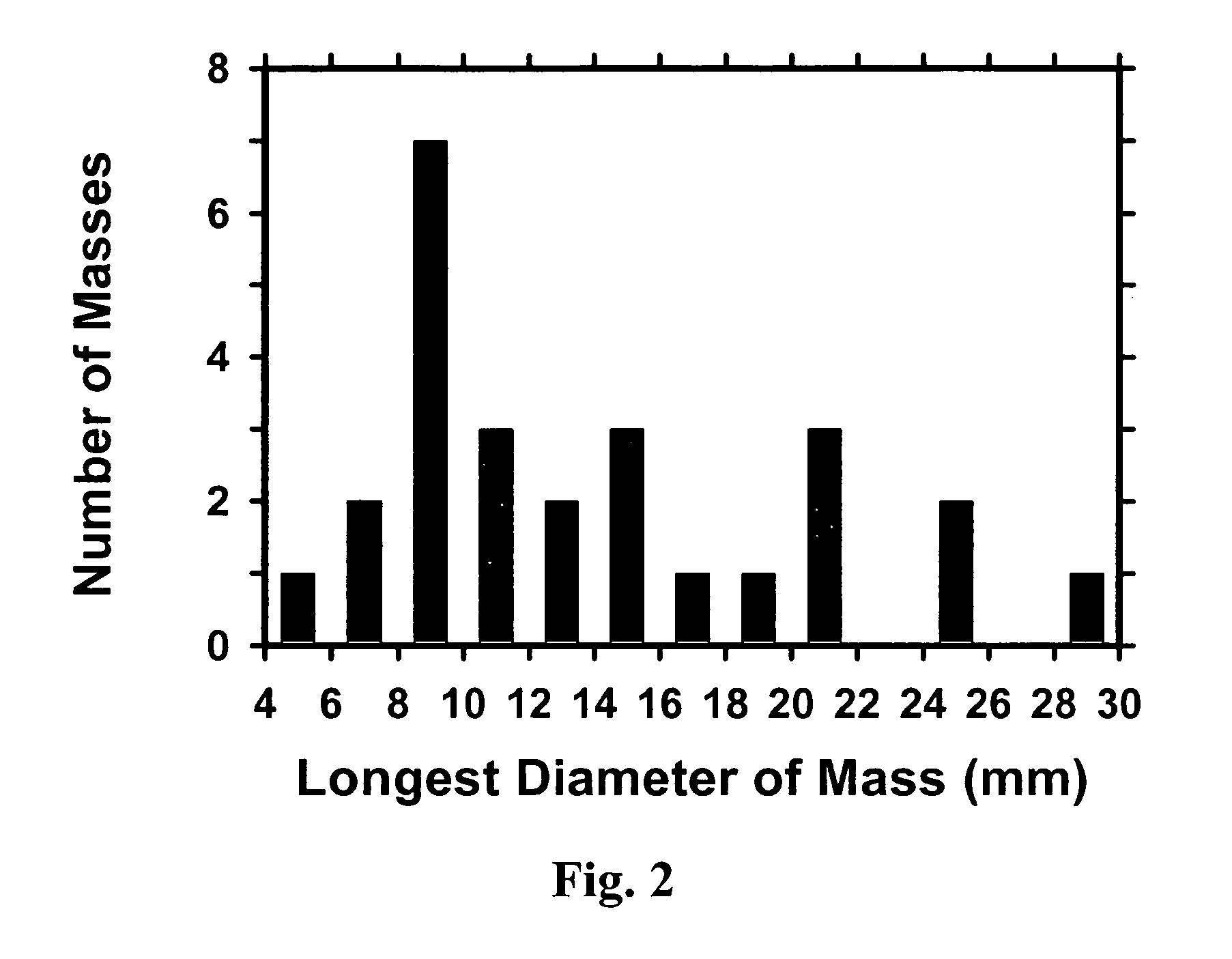Computerized detection of breast cancer on digital tomosynthesis mammograms
a technology of digital tomography and breast cancer, applied in the field of breast cancer detection, can solve the problems of increasing reducing the detection accuracy of breast cancer, so as to improve the detection accuracy and increase the time required for interpretation.
- Summary
- Abstract
- Description
- Claims
- Application Information
AI Technical Summary
Benefits of technology
Problems solved by technology
Method used
Image
Examples
Embodiment Construction
[0021]Referring to FIG. 1, a computer aided diagnosis (CAD) system 20 that may be used to detect and diagnose breast cancers includes a computer 22 having a processor 24 and a memory 26 therein and having a display screen 27 associated therewith. As illustrated in an expanded view of the memory 26, a breast cancer detection and diagnostic system 28 in the form of, for example, a program written in computer implementable instructions or code, is stored in the memory 26 and is adapted to be executed on the processor 24 to perform processing on one or more sets of digital tomosynthesis mammography (DTM) images 30, which may also be stored in the computer memory 26. The DTM images 30 may include DTM images for any number of patients and may be entered into or delivered to the system 20 using any desired importation technique. Generally speaking, any number of sets of images 30a, 30b, 30c, etc. (called image files) can be stored in the memory 26 wherein each of the image files 30a, 30b, ...
PUM
 Login to View More
Login to View More Abstract
Description
Claims
Application Information
 Login to View More
Login to View More - R&D
- Intellectual Property
- Life Sciences
- Materials
- Tech Scout
- Unparalleled Data Quality
- Higher Quality Content
- 60% Fewer Hallucinations
Browse by: Latest US Patents, China's latest patents, Technical Efficacy Thesaurus, Application Domain, Technology Topic, Popular Technical Reports.
© 2025 PatSnap. All rights reserved.Legal|Privacy policy|Modern Slavery Act Transparency Statement|Sitemap|About US| Contact US: help@patsnap.com



